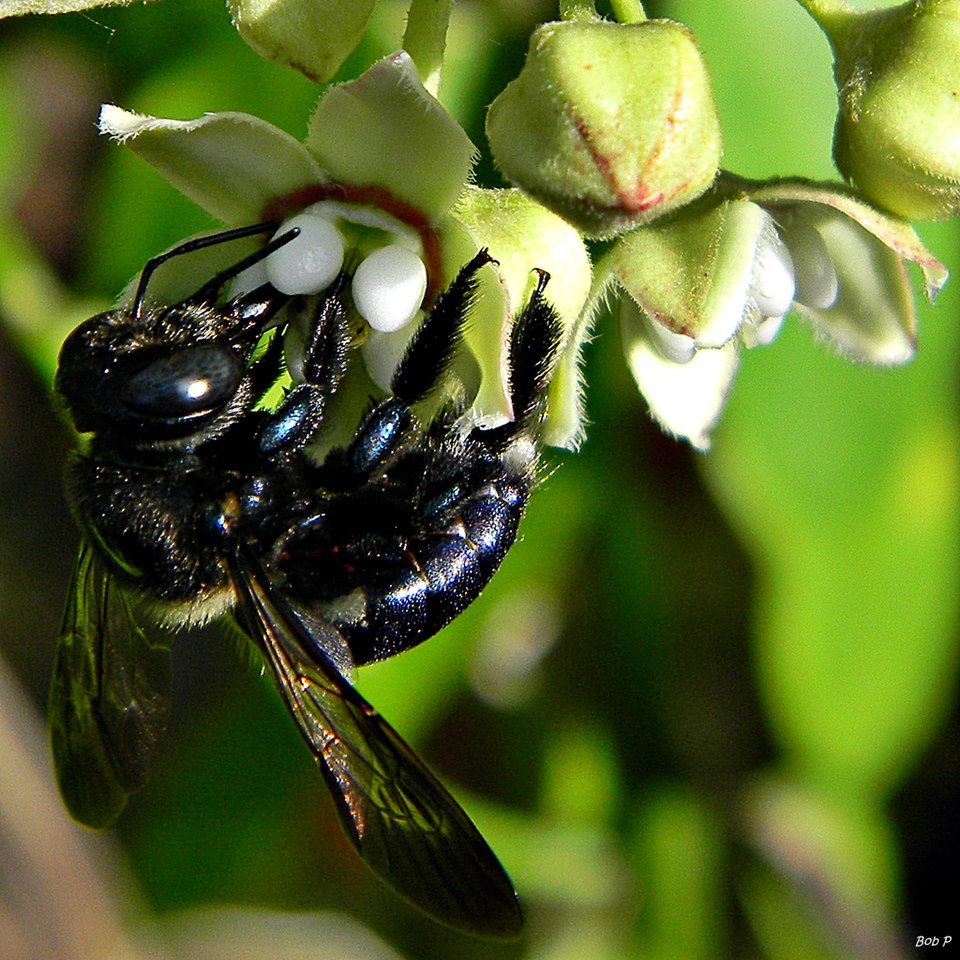
Carpenter Bee
Carpenter bees are part of the genus Xylocopa, which includes about 500 species across 31 subgenera. The name “carpenter bee” comes from their unique nesting behavior — they burrow into hard plant materials like dead wood or bamboo to create their nests. However, some species in the subgenus Proxylocopa dig nesting tunnels in suitable soil instead.
These bees are often confused with bumblebees due to their similar appearance, but carpenter bees typically have shiny abdomens, while bumblebees are covered with dense hair. Additionally, males of some carpenter bee species have yellow or white faces, which distinguishes them further from bumblebees.
Physical Characteristics
The carpenter bee genus encompasses many species that are difficult to tell apart visually. Most of them are black or primarily black with some yellow or white hair, while some have subtle morphological differences, like the structure of male genitalia. The males of many species have much larger eyes than the females, which is related to their mating behavior. Their characteristic wing venation is another defining feature: the marginal cell in the front wing is narrow and elongated, with its apex bending away from the costa.
Ecological Significance
Carpenter bees are significant pollinators, particularly for open-faced or shallow flowers. Some species, like Xylocopa virginica, are even obligate pollinators of certain plants like the maypop (Passiflora incarnata) and Orphium, which cannot be pollinated by any other insect. However, many carpenter bees engage in nectar robbing, which involves piercing flowers with deep corollas to access nectar while bypassing the pollen, thus not contributing to pollination. While this behavior can reduce fruit and seed production in some plants, others have developed defenses against it.
The nesting behavior of carpenter bees also plays a role in their ecological importance. They build their nests by tunneling into wood, bamboo, and other hard plant material. These tunnels serve as nurseries for their brood and storage areas for pollen and nectar. Although carpenter bees can be timber pests if their nests go undetected for too long, they generally cause only minor structural damage.
Behavior
Carpenter bees exhibit both solitary and social nesting behaviors. In some species, females live alongside their daughters or sisters, sharing responsibilities like foraging and guarding. In solitary species, each bee creates its own nest, forages for food, and lays eggs without assistance. The nests themselves are intricate, with some species forming complex pollen masses to provide food for their larvae. Carpenter bees are also known for their distinctive mating behavior: some species have males with large eyes that patrol for females, while others rely on pheromones released by the male to attract females.
Natural Predators
Carpenter bees face several natural predators, including woodpeckers, shrikes, and bee-eaters. Woodpeckers, in particular, are attracted to the noise made by bee larvae and often drill into the nests to feed on them. Other predators include large mantises, predatory flies, and mammals like ratels.
